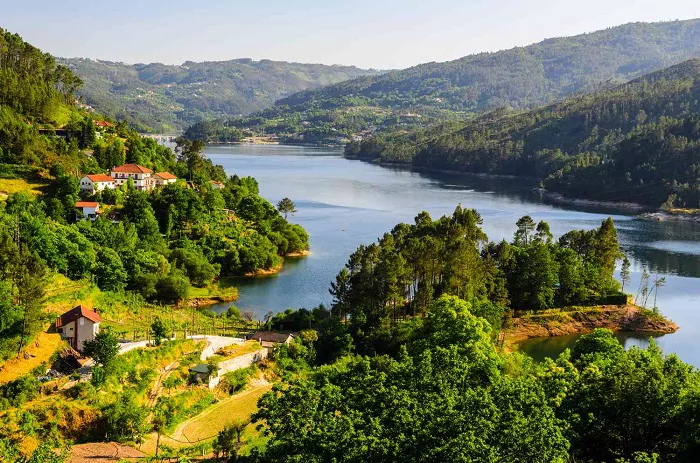Thick mist shrouded the ridge and wind swept over the barren slopes, leaving little visible beyond the rocky trail ahead. Yet one sign of life stood out unmistakably: a trail-side deposit not from a dog, but from something wilder. With no other hikers or domestic animals in sight, the evidence pointed to one source — a wolf.
The presence of Europe’s apex predator in Peneda-Gerês National Park is more than just a rare encounter; it is a symbol of nature’s resilience. After being eradicated from much of Portugal, wolves are returning to this remote region. Two known packs now roam these highlands, marking their presence in the solitude of the wild.
This remote wilderness formed the backdrop for a six-day walking expedition offered by On Foot Holidays. Beginning in the hamlet of Soajo and ending at the 12th-century monastery of Santa Maria do Bouro, the 55-mile journey winds through forest, mountain, and meadow in northern Portugal. Luggage is transferred each day, leaving walkers to carry only essentials.
Despite lying just north of the Douro Valley, Peneda-Gerês remains well off the tourist track and is Portugal’s only designated national park, established in 1971. Rich in natural beauty and steeped in history, the park’s trails were once Roman roads. Around 200 BC, Roman legions marched north through this rugged terrain to subdue Celtic tribes and expand imperial control over the Iberian Peninsula.
In mid-April, with weather conditions fluctuating between sun and storm, the experience is dynamic. After arriving in Porto under rainclouds and catching a fado performance in a Benedictine monastery, hikers head inland by train and taxi to Soajo. There, the charm of stone cottages and the distant call of a hoopoe welcome them to the trailhead.
Day one sets the tone for the journey. The path meanders through moss-covered woodland alive with birdsong, across stone bridges spanning lively rivers, and over heathland inhabited by Dartford warblers and Iberian wall lizards. With no other hikers in sight, traditional map reading is supplemented by a GPS app and red-and-white markers painted on rocks.
That evening, the trail leads to Lindoso village, home to espigueiros – traditional grain stores elevated on stone pillars and topped with crosses. Dinner at Casa do Destro features Portugal’s culinary staples: baked bacalhau (salted cod) and grelos (turnip greens), paired with a refreshing vinho verde.
The second day reveals a more formidable side of the mountains. Rain and mist transform the landscape into something seemingly inhospitable to humans but fitting for wolves. The route concludes after nearly 23km at Leiras do Tempo, a luxurious retreat in Brufe. With a rest day ahead, there is time to recover and explore further.
An “optional” hike to the Casarotas wolf trap proves irresistible. The dry-stone V-shaped structure, dating to the 18th century, was once used by farmers to trap and kill wolves threatening livestock. Today, its lichen-covered stones stand as a stark reminder of humanity’s historical struggle against nature — and how the balance is slowly being restored.
Later, the journey descends deeper into history. From Campo de Gerês, the trail joins a well-preserved Roman road. This two-person-wide granite path weaves through oak and pine forest, accompanied by informational plaques and metal cut-outs of Roman soldiers. Ancient milestones left by the empire confirm the route’s authenticity.
Traces of past and present wildlife abound. Though bears no longer roam here, signs of wild boar remain. Barrosã cattle graze in the fields, echoing the extinct aurochs that once dominated the Iberian wilderness. A fire salamander, golden oriole, and wild orchids further enrich the trail’s biodiversity.
The hike culminates at the Monastery of Santa Maria do Bouro, now a converted pousada in Amares. After six days of trekking, guests are greeted with luxury, from orange groves and stone cloisters to a complimentary glass of port. Beyond the window, the mountains stretch out, still wild, still watching.
Although no wolves were seen, their presence was felt — a silent reminder that this landscape, once shaped by conquest and survival, is now shared once again with its oldest inhabitants.


